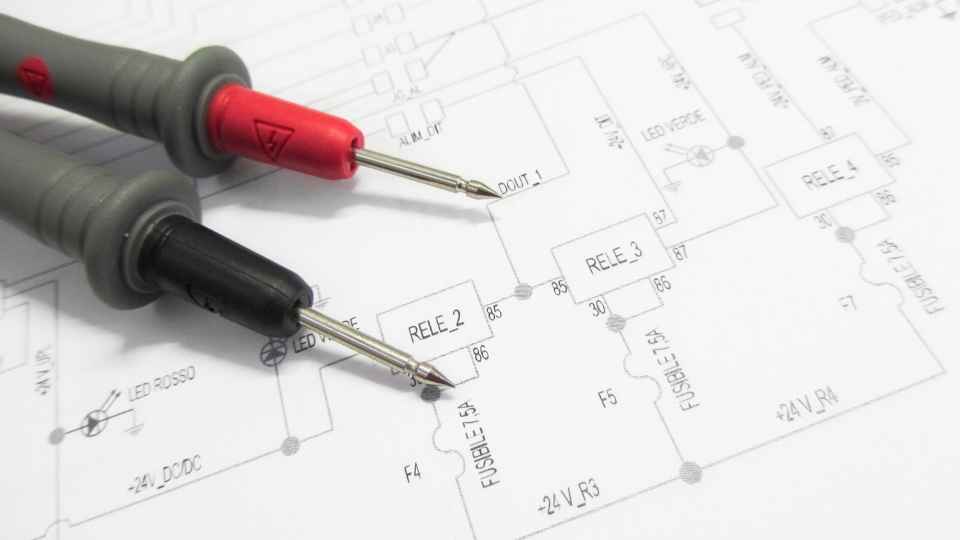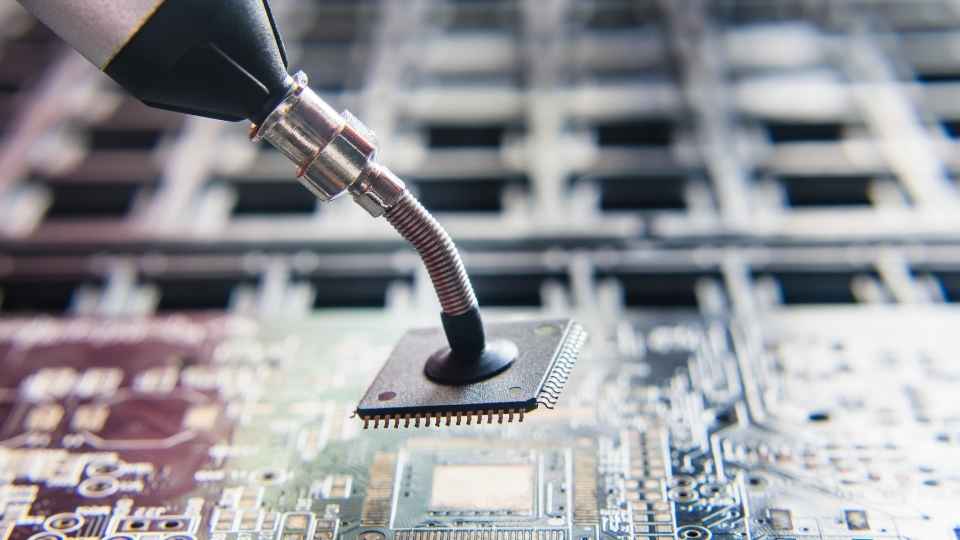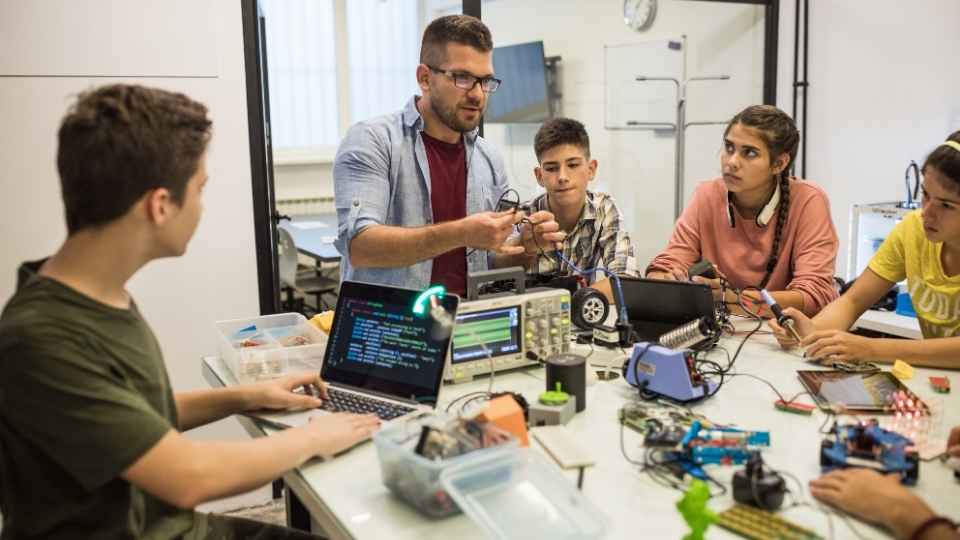
In the ever-evolving world of technology, one cannot underestimate the transformative power of integrated circuits in modern electronics. These tiny wonders have revolutionized the way we design and develop electronic devices, enabling unparalleled levels of efficiency, functionality, and automation.
As an electronic engineer, understanding the intricate workings of integrated circuits is paramount to staying ahead in this dynamic field.
So let's delve into the depths of these remarkable components and explore how they have reshaped our digital landscape with precision and ingenuity.
Key Takeaways
- Integrated circuits revolutionized the design and manufacturing of electronic devices.
- They have had a profound impact on digital signal processing, making it more accessible and affordable.
- Integrated circuits revolutionized power electronics, enabling highly efficient and compact power converters.
- Embedded systems combined with integrated circuits have transformed device functionality, allowing for seamless connectivity and improved energy efficiency.
The Evolution of Integrated Circuits in Modern Electronics
The evolution of integrated circuits in modern electronics has revolutionized the way electronic devices are designed and manufactured. Integrated circuits, also known as microchips or simply ICs, are tiny electronic components that contain thousands or even millions of transistors, resistors, and capacitors on a single silicon chip.
This compact design allows for increased functionality and performance while reducing the size and cost of electronic devices. As technology advances, integrated circuits have become smaller, faster, and more efficient, enabling the development of innovative products such as smartphones, tablets, wearable devices, and smart home appliances.
Furthermore, the integration of multiple functions onto a single chip has eliminated the need for bulky discrete components and simplified circuit design. The evolution of integrated circuits has truly liberated electronic engineers to explore new possibilities in designing cutting-edge technologies that enrich our lives with convenience and freedom.
The Impact of Integrated Circuits on Digital Signal Processing
One of the key advancements facilitated by integrated circuits is their profound impact on the field of digital signal processing.

Integrated circuits, also known as ICs or microchips, have enabled significant advancements in this field by providing compact and efficient solutions for processing and manipulating digital signals. These tiny electronic components contain numerous transistors, resistors, capacitors, and other elements that work together to perform complex signal processing tasks.
With the advent of integrated circuits, digital signal processing has become more accessible and affordable, leading to a wide range of applications such as audio/video compression, telecommunications, image and speech recognition systems, and biomedical devices.
The integration of these powerful chips into various electronic devices has revolutionized the way we process and analyze digital signals.
This seamless transition between different sections can be attributed to power electronics: harnessing integrated circuits for efficient energy conversion.
Power Electronics: Harnessing Integrated Circuits for Efficient Energy Conversion
Harnessing the capabilities of integrated circuits, power electronics plays a crucial role in achieving efficient energy conversion. Power electronics is a specialized branch of electrical engineering that deals with the control and conversion of electric power using electronic devices. Integrated circuits, which are miniaturized electronic components, have revolutionized power electronics by enabling the development of highly efficient and compact power converters. These integrated circuits provide high-speed switching capabilities and precise control over various parameters such as voltage, current, and frequency. By efficiently converting electrical energy from one form to another (e.g., DC to AC or vice versa), power electronics enables the implementation of advanced technologies like renewable energy systems, electric vehicles, and smart grids.
The integration of embedded systems with integrated circuits further enhances device functionality by enabling intelligent control algorithms and real-time monitoring capabilities.
Transition: While power electronics focuses on efficient energy conversion, embedded systems combined with integrated circuits revolutionize device functionality in various applications.

Embedded Systems and Integrated Circuits: Revolutionizing Device Functionality
Embedded systems combined with integrated circuits have greatly transformed device functionality in a wide range of applications. These powerful and compact systems have revolutionized the way devices operate, offering enhanced performance and efficiency.
Here are three key ways in which embedded systems and integrated circuits have impacted modern electronics:
Increased Processing Power: Integrated circuits enable the integration of complex processors into small devices, allowing for faster data processing and improved performance.
Enhanced Connectivity: Embedded systems with integrated circuits enable seamless connectivity between devices, enabling efficient communication and data transfer.
Improved Energy Efficiency: Integrated circuits optimize power consumption in embedded systems, resulting in longer battery life and reduced energy consumption.
These advancements have provided individuals with greater freedom to use advanced technologies that offer improved functionality while maintaining portability and convenience.
Control Systems: How Integrated Circuits Enable Precise Automation
Control systems rely on the precise automation enabled by integrated circuits to ensure accurate and efficient operation in a wide range of applications. These systems play a crucial role in industries such as manufacturing, transportation, and energy management. Integrated circuits, or ICs, are at the heart of control systems, enabling them to monitor and regulate various parameters with high precision and reliability.

ICs provide the necessary functionality for control systems to receive input signals, process them through complex algorithms, and generate output signals that drive actuators or other components. The integration of multiple electronic components onto a single chip allows for compact designs while reducing power consumption.
Furthermore, ICs enable control systems to implement advanced features such as feedback loops, closed-loop control algorithms, and real-time monitoring. This level of automation not only improves efficiency but also enhances safety by minimizing human error.
Frequently Asked Questions
What Are Integrated Circuits Made Of?
Integrated circuits, also known as microchips, are made of semiconductor materials like silicon. These materials undergo complex manufacturing processes to create tiny electronic components such as transistors, diodes, and resistors that are interconnected on a single chip.
How Do Integrated Circuits Work?
Integrated circuits, also known as microchips, revolutionize modern electronics by providing compact and efficient solutions for complex circuitry. They work by integrating multiple electronic components onto a single chip, allowing for faster processing speeds and increased functionality.
What Are the Different Types of Integrated Circuits?
Integrated circuits are electronic components that contain multiple interconnected transistors, resistors, and capacitors on a single chip. They come in various types such as microprocessors, memory chips, and application-specific integrated circuits (ASICs), each designed for specific functionalities in modern electronics.
What Are the Advantages of Using Integrated Circuits in Electronic Devices?
Integrated circuits offer numerous advantages in electronic devices. They enable miniaturization, making devices smaller and more portable. They also provide increased reliability, lower power consumption, faster processing speeds, and improved performance in terms of functionality and integration.
How Are Integrated Circuits Manufactured?
Integrated circuits are manufactured using a process called photolithography, which involves creating intricate patterns on a silicon wafer. This process allows for the precise placement of transistors, capacitors, and other electronic components, resulting in compact and highly efficient integrated circuits.

 Basic Electronics ConceptsEssential ToolsCircuit Design BasicsMicrocontrollersDIY Electronics ProjectsRoboticsPrivacy PolicyTerms And Conditions
Basic Electronics ConceptsEssential ToolsCircuit Design BasicsMicrocontrollersDIY Electronics ProjectsRoboticsPrivacy PolicyTerms And Conditions
